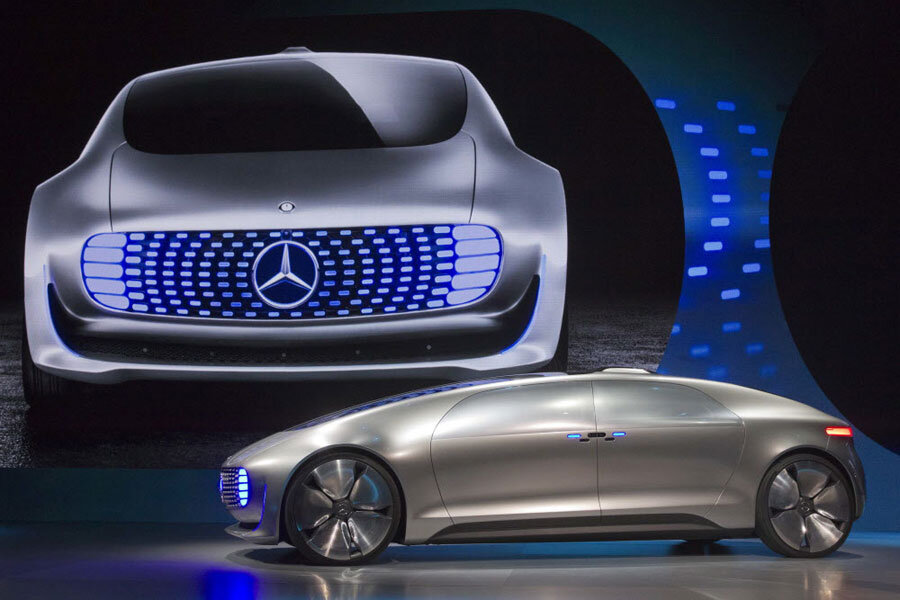Mercedes-Benz F015 promises a luxurious future for self-driving cars
Loading...
The (not yet fully) autonomous Mercedes-Benz F015 takes a different approach to exploring driverless automobiles by focusing on the human experience, as opposed to the machinery.
The best way to review the F015 is to start from the outside and work your way in.
Mercedes gave the vehicle a long body with a metallic, sleek design, and wheels that are spaced far apart to allow for more legroom in the cabin. The car also has motorized coach doors that open automatically, but the standout feature is the LED lights that covered the grill and back of the car, which is how the vehicle interacts with the outside world.
The lights will glow blue when the F015 is in self-driving mode and will shine white when it is switched to manual steering. The LEDs will also alert drivers behind the vehicle if the car is slowing down or coming to a stop.
The car can communicate with pedestrians and cyclists, as well. Sensors in the grill will signal to outside observers when the car has detected a human and then use lasers to draw a virtual crosswalk to indicate that it is safe to pass in front of the vehicle. If someone waves, the car can use external speakers to say, “thank you,” in addition to other verbal exchanges.
The F015 can be summoned with an iPhone by using the Mercedes-Benz app. Engineers at the demonstration were able to tell the car how many individuals would be climbing into the vehicle with the app, and the car would open the corresponding number of doors and turn out the motorized, swivel seats for easier entry. Additionally, operators can use the same app to tell the car to go park itself, acting as its own valet.
Once inside, one reviewer compared the interior to an Apple Store. The white, leather swivel chairs, designed for comfort, took an egg-like, bucket shape and sat on top of wood floors that were surrounded by glossy, plastic walls decked out in touchscreens. All the doors were fitted with large, interactive monitors in addition to the massive screen behind the back seats and a gesture-controlled dashboard. Mercedes even managed to cram a fold-out touchscreen into the center console, which is typically reserved for cup holders.
Passengers can use the screens to display a dizzying amount of information, including audio-source figures, vehicle speed, estimated arrival times, video or voice calls, satellite positioning, and much more. If users prefer, they can also fill the car with images of exotic lands and augmented reality (because, you know, staring at real trees is so overrated).
Mercedes also imagines a future where you do not need to be in the drivers seat to be in control. For better or worse, backseat drivers will be able to control any of the cars functions. Anyone in the car can adjust the speed, set a destination, alter routes, or control autonomous features.
The car is far from production ready. One group of reviewers had to start the course over again because of a system error, but most seemed incredibly excited for the F015’s potential.
The car will likely never hit the road in this form, but Mercedes is hoping for a 2030 release date with something based off this vehicle.






